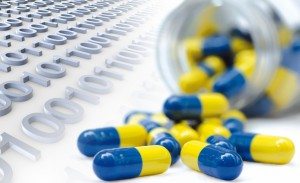 Counterfeit medicines are a global concern, and can include toxic substances, as well as inactive and ineffective ingredients that are harmful to consumers. Last December, The Drug Quality and Security Act (DQSA), which focuses on compounding and a track-and-trace system, was signed into law by President Obama. As a result of the enhanced focus on tracking and authenticating drugs, many innovative solutions are being proposed to help tackle the spread of counterfeit drugs.
Counterfeit medicines are a global concern, and can include toxic substances, as well as inactive and ineffective ingredients that are harmful to consumers. Last December, The Drug Quality and Security Act (DQSA), which focuses on compounding and a track-and-trace system, was signed into law by President Obama. As a result of the enhanced focus on tracking and authenticating drugs, many innovative solutions are being proposed to help tackle the spread of counterfeit drugs.
February 17-21 was Global Innovation Week, recognizing inventors who develop, experiment, and implement new technologies. In recognition of this worldwide event, we will take a look at technological innovations to track and authenticate counterfeit drugs. Below are several examples:
- PharmaCheck: Boston University Associate Professor Muhammad Zaman, and graduate students Darash Desai and Andrea Fernandes, invented PharmaCheck, a fast, portable, user-friendly detector for screening counterfeit and substandard medicines. To test a medication, a user places a pill into a small testing box which instantly reports the amount of active ingredient found in the pill. Professor Zaman and the students received national recognition in the form of a National Collegiate Inventors and Innovators Alliance Grant to develop the technology.
- Liquid Barcoding: Chelsea Virgile, a graduate student at the University of Maryland, developed liquid barcoding technology to enable manufacturers to add non-toxic dyes that have already been approved by the FDA into a drug’s liquid filler. According to Virgile, who won first prize in University of Maryland’s “America’s Got Regulatory Science Talent” competition, “Different color dyes added in different quantities could be used to provide specific information about the drug.”
- Cell Phone Technology: Ashifi Gogo, an entrepreneur from Ghana, developed an innovative solution combining cell phones, community, and the cooperation of governments and pharmaceutical companies. His idea was to place a scratch-off label on pharmaceutical products containing a unique code, which a consumer can then send via text message, and receive a reply as to whether the product is authentic or not.
- Hologram Seals: Holley-Cotec, the company that manufactures the antimalarial Duo-Cotecxin, introduced a new technology to make the tablets tamper-proof. New packets of the drugs will have three-dimensional hologram seals and other features to indicate the drugs are authentic.
With innovations like these on the horizon, detecting counterfeit drugs will hopefully be a less difficult task. At CSIP, we applaud these innovations and hope that they will help make the internet a safer place for consumers and health care professionals to buy safe and authentic prescription drugs. We also hope consumers will take advantage of our educational resources and LegitScript Pharmacy Checker Tool before they buy to ensure safety while new track and trace technologies are being developed.
####
The Center for Safe Internet Pharmacies (CSIP) and our 12 member companies have the shared goal of helping address the growing problem of consumer access to illegitimate pharmaceutical products on the Internet. Continue to read this blog for updates on CSIP’s education, enforcement and information-sharing efforts.
This item was highlighted in CSIP’s May 2014 newsletter.

